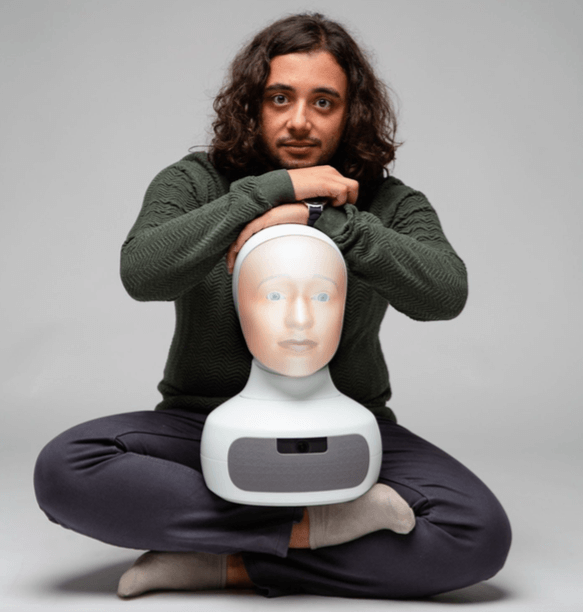– Written by the Furhat Robotics team –
We live in an era of screens. Staring and typing at our smartphones, tablets and computers make up an increasingly big portion of our days, and the more intelligence that resides in these machines the more addicted we become.
We as humans are not made to spend our days looking at LED displays, but rather to look into faces. From the time we are born, we are hard-coded to look into faces and we search for human faces wherever we go; in clouds, houses, trees, your morning coffee cup etc. Seeing someone’s face while communicating also brings much more information than simply chatting or using your voice – you get access to all the nonverbal communication cues such as nodding, smiles, moving your eyebrows and looking someone in the eyes.
This insight is something that the Swedish startup Furhat Robotics decided to take action on! Stemming from 20+ years of research at the Royal Institute of Technology in Stockholm, their social robot Furhat – a physical robot head with a human-like face – entered the market a few years ago to bring the human face back to AI. The robot has a unique, back-projected face onto a 3D printed mask, which allows for extreme customization and means that changing gender, age or ethnicity is just a mouse click away. Coupled with a state-of-the-art conversational platform, you end up with a robot companion that includes all aspects of communication.
Furhat Robotics are not the only ones to believe that social robots will be important for our society going forward. In 2019, World Economic Forum named social robots one of the 10 top emerging technologies that has the potential to alter established ways of living and provide major benefits to societies and economies.
So how could these robots support us? Some inspirational cases to name a few are that they could help train employees, screen people for deadly diseases and provide around-the-clock support to travellers in different languages. An application that has gotten much attention in recent years is the unbiased recruitment robot Tengai, which performs live screening interviews to help remove bias from the recruitment process.
The time has come for robots – not to take over, but to complement our other technologies and bring humanity and social interaction to situations where humans cannot be present for logistical, financial or practical reasons. We have learnt the hard way during 2020 that these situations definitely exist!



